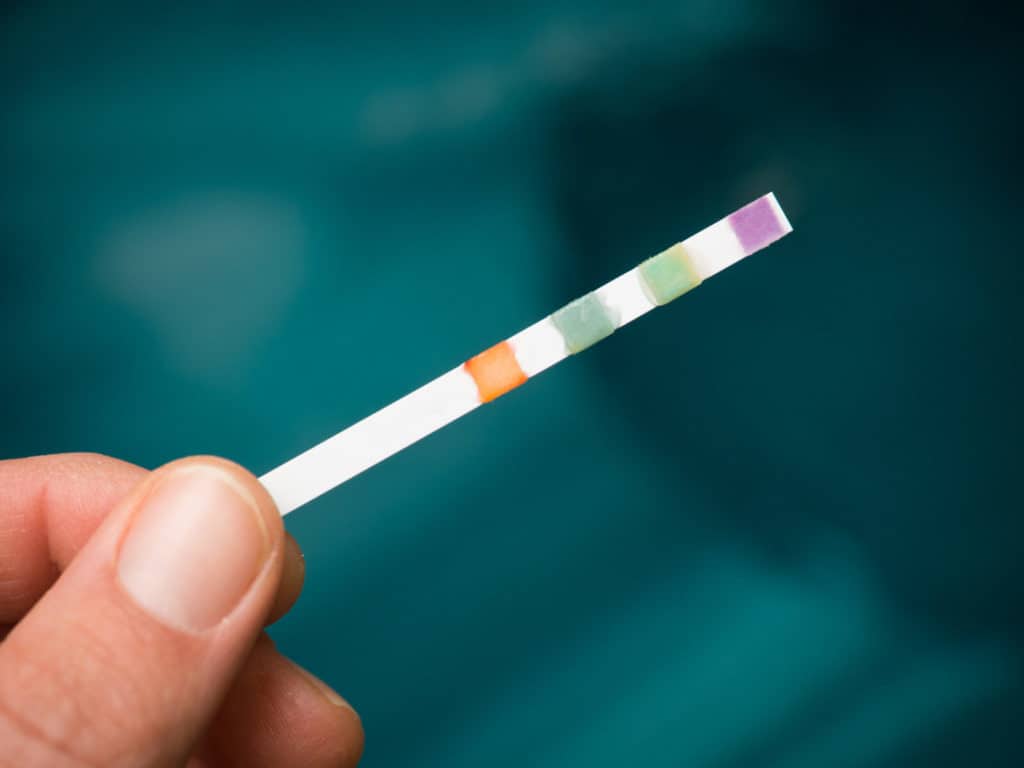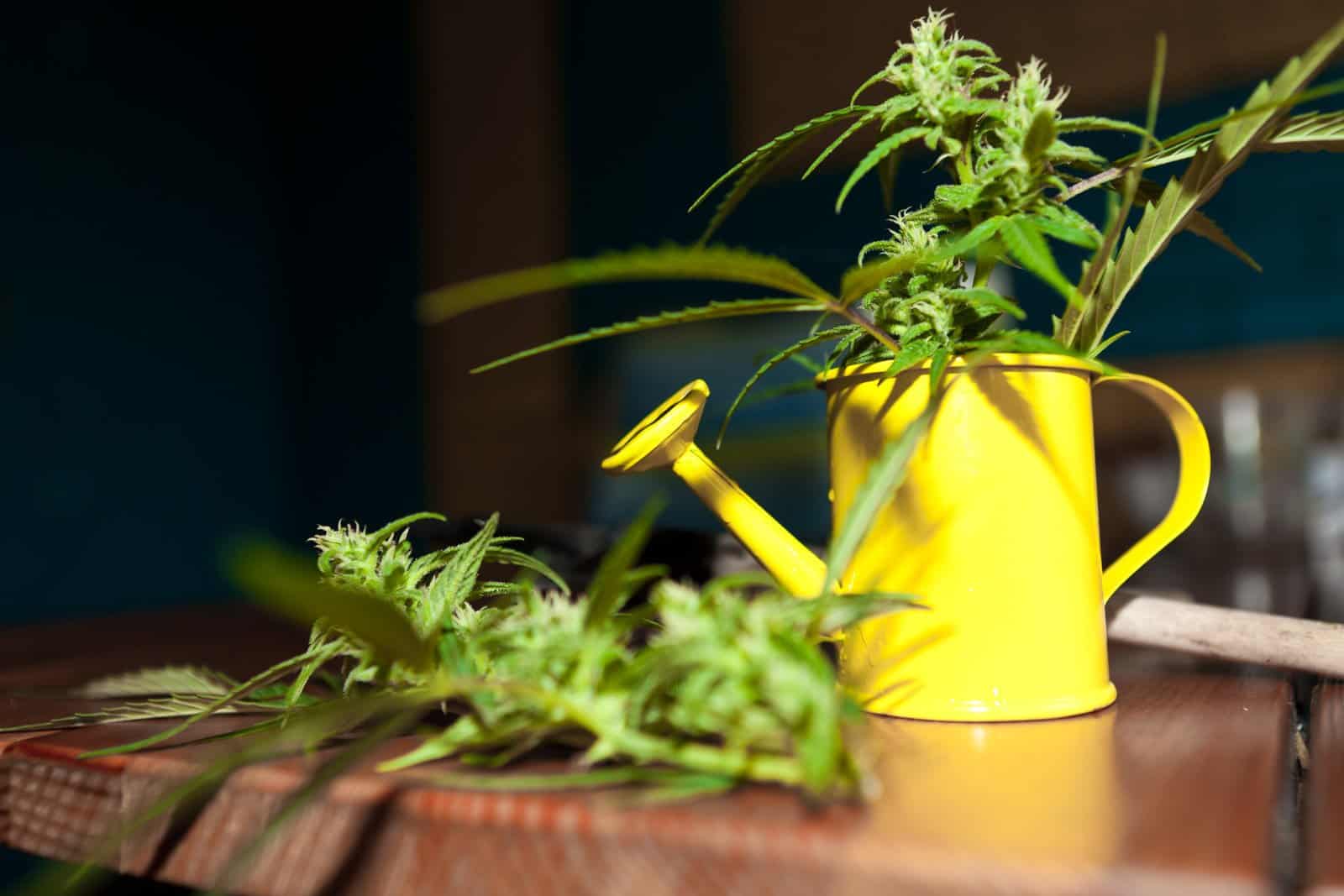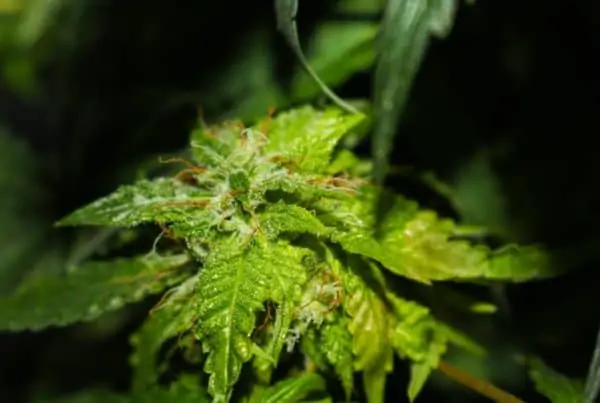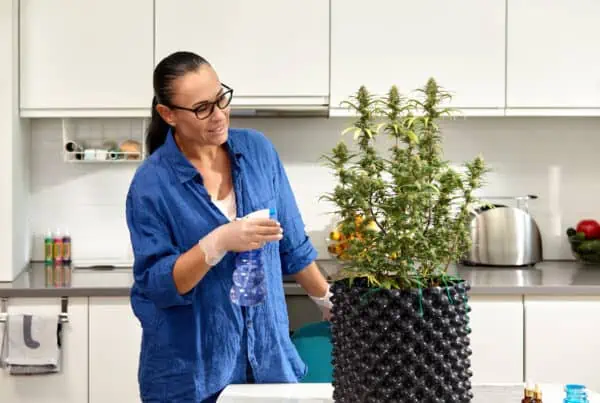TABLE OF CONTENTS
If you plan to grow cannabis, or even if you already have a few successful grows under your belt, sooner or later you’ll encounter the acronym “ppm”.
While it’s not usually necessary to obsess about ppm and you can grow outstanding cannabis without even knowing what ppm is, it pays to educate yourself about it because it can impact your grow—especially as you advance with your cultivation methods and technique.
What is PPM in Water
So, let’s lift the veil of mystery over what ppm is and how it can relate to growing cannabis. An acronym for “parts per million,” ppm relates to water solubles, including mineral and other substances, in the cannabis space. One part per million equals 1 mg of solubles for every liter of water.
This is a very small measurement increment. Parts per million are found in most types of water, from tap water to mountain spring water. Distilled or reverse-osmosis water are two of the only types of water that eliminated ppm. If you have your tap water tested for purity, the results will be measured in parts per million.
Analyzing your tap water will indicate if you would benefit from a water purification system for drinking water. Testing well water is especially useful because it’s devoid of fluoride and other additives found in most city water to minimize contaminants.
Most tap water that’s safe for drinking or cannabis use will have ppm in the 200-300 range, which is relatively normal. When water gets to several hundred parts per million, it indicates the pipes in your home may be somewhat old and an alternative water source may be beneficial for your cannabis.
How Do You Measure PPM?
To determine the level of ppm in your water, you will need a TDS meter (TDS is an acronym for “total dissolved solids”). So, if you use a TDS meter to measure your home’s tap water and your results come back as 200-300 parts per million, it means you have 200-300 parts per million of dissolved minerals in your water, which is in the normal range.
PPM and EC
Any serious conversation about ppm will also touch on ec; it almost seems inevitable since the two are closely related. EC stands for “electrical conductivity.” Using an EC meter measures the electrical conductivity in the water you’re using, and this reading is useful for measuring the amount of dissolved solubles in your water. A PPM meter and a EC meter essentially do the same things.
As a matter of fact, some TDS meters actually determine the level of electrical conductivity of a water sample and convert the results to parts per million. Simply stated, some TDS meter are really EC meters. Since the two are so closely related, brief mention must be made about EC.
PPM Relevance to Cannabis Cultivation
By this time, you may be wondering why knowing about ppm is important when growing cannabis. The main reason is to provide optimum nutrient amounts to your plants, while simultaneously avoiding burning them by overdosing them on nutrients.
If you’ve grown cannabis long enough and use a variety of fertilizers and soil additives, you realize that all fertilizers are not created the same and nearly every cannabis grower has a favorite. No one likes to see the telltale curled leaf tips and yellowing commonly associated with nitrogen burn in cannabis.
Although plants will eventually recover and be none the worse for wear over the long haul, burning does shock the plants and temporarily hamper them.
Eliminating nutrients altogether for a while will solve the problem, but as the old saying goes, “prevention is the best medicine.” Try to avoid burning altogether by being somewhat conservative with nutrients and additives (use one half to three quarters the suggested amount), and as a second step you can monitor the parts per million to dial in on precise nutrient dosing.
Water PPM and Nutrients for Cannabis
Since water ppm varies depending on the source, knowing the water’s soluble ppm right out of the tap will aid a grower when deciding how much nutrients to add to the water. Along with proper water pH, optimum ppm levels after adding nutrients can sometimes make the difference between adding too little fertilizer or too much. A person with a high tap water ppm can sometimes unintentionally burn a plant when following correct nutrient dosage and schedule protocol.
Plants can only absorb a certain amount of solubles and minerals, and you want your plants to receive the optimum amount.
A young seedling or a cutting (clone) will enjoy a ppm of approximately 500-600 and will respond positively to an increase of about 850 ppm during the medium and late stages of vegetative growth.
During the flower stage, optimum parts per million rises to 1000-1100. Clearly, cannabis plants enjoy increased parts per million as they grow.
Water ppm readings have applications for both hydroponic and conventional soil cultivation methods. With soil cultivation, the water ppm should be checked after adding additives to the watering vessel. For hydroponic use, check the reservoir. With too low ppm, add more nutrients, and with too high, dilute with water until you reach an optimum level.
TDS Meters
Like humidity meters, temperature gauges, and pH meters used for cannabis cultivation, there is a wide range of TDS meters on the market at affordable prices. TDS meters that measure parts per million differ somewhat. Some can read a higher level of ppm and can monitor other things like temperature.
The range of measurable ppm on some of the fancier meters can go as high as 9999 ppm, but this is not necessary for cannabis cultivation. Using a TDS meter that goes to 3500 parts per million will serve your needs just fine. Anything over 5000 is unnecessary.
Before using your TDS meter to measure ppm in water, nutrients, and runoff, you’ll need to calibrate your device using a solution containing a certain level of ppm. Calibrating solutions can be bought online or at a grow supply store. Make sure your calibration fluid is at room temperature to avoid discrepancies. Follow the package instructions to test your fluid with your meter. If the ppm reading is correct, your device is calibrated. If not, follow your device’s instructions to calibrate it.
Now that you know your TDS meter is up-and-running and precise, you can start using it to measure your ppm. Turn on your TDS meter, remove the cover from the bottom, and ensure it has a reading of zero before inserting the tip (about half an inch) of the meter into the water you’re testing. Below, you’ll find a list of the best TDS meters for your cannabis grow:
- HM Digital TDS-EZ Water Quality TDS Tester
- HoneForest Water Quality Tester
- Generic Digital LCD TDS Meter Waterfilter Tester
- Lxuemlu TDS Meter Digital Water Tester
- Health Metric Professional TDS PPM Conductivity Meter
Understanding PPM Results

To determine the exact nutrient intake of your cannabis plants, you’re going to have to measure the ppm of your nutrient reservoir and your runoff. Generally, the ppm reading of your runoff will be lower than the ppm from your reservoir. This shows that your plants are taking in nutrients when you’re feeding them.
As you can see understanding water ppm for cannabis is a key to getting cannabis grows right! PPM in water is a science in itself.
PPM Lower in Runoff
A low ppm runoff reading compared to the nutrient’s ppm reading is ideal. Keep measuring your ppm regularly to catch any significant drops. If your ppm drops from 1500 to 800 every day for a week, it means your plants are consistently drawing in the same level of nutrients.
For extremely low runoff levels, however, consider increasing your nutrient treat rates gradually.
No PPM Change
If there is no difference in ppm results between your nutrients and your runoff, we have a problem. That means your plants aren’t taking in the right level of nutrients. If this is occurring in your garden, consider checking your pH levels. Inconsistent pH levels can hinder nutrient intake. Nitrate and phosphate, for example, are best absorbed in certain pH ranges.
Lower-Than-Usual PPM in Runoff
If you notice lower-than-usual ppm readings in your reservoir, you may be losing out on nutrients due to nutrient lockout. Check for a white precipitate build-up in your nutrient reservoir. This can occur when some ions don’t mix well together and form a solid. Calcium phosphate is notorious for this.
To overcome this issue, make sure you’re properly mixing your nutrients as you add them and wash your mixing cup between nutrients.
Water PPM Higher in Runoff
A higher-than-normal ppm result from your runoff is rare, but this indicates that there’s a salt buildup at the root zone. The buildup gets stuck and gradually dissolves into the runoff leading to high ppm levels. Ensure you’re properly stirring calcium salts such as calcium phosphate, calcium carbonate, and calcium hydroxide. A line cleaner or flushing with water can help remove the calcium salt buildup.
Yellow Leaves
If your cannabis leaves are turning yellow, you’ll need to check your ppm results for your nutrient reservoir and your runoff. Ensure your nutrient levels (phosphates, nitrates, and potassium ions) are decreasing between your reservoir and runoff, showing that the yellowing isn’t due to any nutrient deficiency.
Check for other element deficiencies. If nutrients aren’t the problem, your pH may be the source of the issue.
pH Changes
Is there a considerable pH increase or decrease between your nutrient reservoir and your runoff? A little discrepancy between pH levels is normal. Significant pH changes, however, are known as pH drift. Check for nutrient lockout, one of the main culprits for pH drift. Changes in pH can prevent the roots from absorbing certain nutrients, which is why it’s so important to regularly monitor for this.
Using Organic Soil
Testing your ppm can get tricky if you’re growing organically. Unlike using synthetic fertilizers, organically-assembled soil contains complex molecules that are gradually released over time. Because the organic soil has yet to break down the complex molecules into simple salts, your ppm readings may be hard to decipher.
Ppm readings from your organic soil won’t take into account the total nutrients in your soil that have yet to break down. When growing organically, pay more attention to your pH levels and signs of nutrient deficiencies or imbalances.
Is Measuring Water PPM Necessary?
Whether or not a TDS meter is necessary when growing cannabis depends on your water source and your cultivation goals. Certainty commercial operations should monitor it closely to maximize yield. For the private home grower, the decision depends on how much the grower wants to dial in on perfect cultivation methods and perfect his or her craft.
Measuring the salt and nutrient levels in the water is crucial to ensure the right amount of nutrients are fed. For instance, if you measure your ppm one day and get a result of 1,600 ppm and then measure your ppm the next day and get a 2,100 ppm reading, you know you added too many nutrients the day before.
There is no doubt that many cannabis growers have cultivated and harvested a large number of dank and sticky grows without giving parts per million a second thought. These same growers can grow outstanding bud without worrying excessively about grow room CO2 levels.
When it comes to cultivation factors like ppm and CO2 levels, we’re looking at somewhat advanced procedures. These are choices that separate the novice cannabis grower from the advanced cannabis grower.
If you merely want to grow some good flower for personal use, you may want to skip it. On the other hand, if you want your grow to be as perfect and productive as possible, it would be wise to implement these advanced techniques.
If you ever want to advance to commercial cultivation with a cannabis company, do yourself a favor and learn about it—and put it to use now. You’ll be a more knowledgeable and successful grower as a result!
Water PPM For Cannabis Growing FAQ's
What is PPM, and why is it important for growing cannabis?
PPM is an abbreviation that stands for “parts per million,” and it is a quantification of the amount of minerals and other dissolved solids that are present in water. In the production of cannabis, the monitoring of PPM is extremely important because it provides information about the nutrient levels in the water, which has a direct impact on the health and growth of the plant. There is a balance between underfeeding and overfeeding plants when the quantities of nutrients are appropriate.
What is the ideal PPM for growing cannabis?
In cannabis cultivation, the optimal PPM varies according to the stage of the plant's development. It is common for seedlings and young plants to flourish at lower levels of pesticides and fungicides (between 250 and 400 PPM), although the vegetative and flowering stages of plants may require greater levels (between 450 and 800 PPM and 850 to 1500 PPM, respectively). On the other hand, these ranges are subject to change depending on the particular strain and the growing conditions.
How can I measure the PPM of my water?
An instrument known as a TDS (Total Dissolved Solids) meter can be utilized to measure PPM. This instrument provides a measurement that indicates the overall concentration of chemicals that have dissolved in the water. In order to obtain a PPM reading, you need only dip the meter into the water source or nutritional solution that you are using.
How does PPM affect the pH level of my nutrient solution?
The pH scale monitors the acidity or alkalinity of the solution, and the PPM scale measures the concentration of dissolved solids. Alterations in the nutrient concentration (PPM) have the potential to influence the pH level, which is why they are connected. When it comes to maintaining an ideal growing environment for cannabis, it is essential to keep a close eye on both the PPM and pH levels.
Can high PPM levels harm cannabis plants?
Extremely high levels of PPM can cause nutrient burn, which is a condition in which plants receive an excessive amount of nutrients that they are unable to process. This can result in leaf burn and other growth issues. To prevent this from happening, it is essential to regulate the quantities of nutrients to the right PPM ranges.
What should I do if the PPM of my water is too high or too low?
If the PPM is too high, water should be added to your nutrition solution in order to dilute it. It is possible to supply more nutrients if it is too low. Maintain a slow adjustment process and keep a close eye on your plants for any indications of suffering.
Do different cannabis strains require different PPM levels?
In spite of the fact that different strains may have different nutritional requirements, the typical PPM values for growth phases are applicable to the majority of strains. It is usually a good idea to do research on the specific requirements of your strain and make adjustments at the appropriate times.
“
There are over 300,000 jobs in the cannabis industry. CTU trained me for one of them!

Makes $24.50 @ THC +
Is PPM monitoring necessary for all types of cannabis grow setups?
Due to the fact that nutrients are given directly to water in hydroponic and other soilless settings, PPM monitoring is of increased significance in these environments. Although the soil itself serves as a buffer in soil grows, it is still necessary to check PPM in order to guarantee that adequate nutrient levels are achieved.
Keep in mind that the appropriate PPM level might change depending on a variety of factors, including the strain, the stage of growth, and the particular growing conditions. In order to cultivate cannabis successfully, it is essential to do routine monitoring and changes.
What should PPM be during flowering phase of cannabis growth?
Your plants' nutrient consumption will continue to increase as they progress through the mid-stage flowering stage, which occurs between 1000 and 1100 PPM. This is the time of year when your plants are eating the most, particularly if you are providing them with supplements. Late-Stage Flowering occurs between 1100 and 1150 PPM. At this point, you will be flushing your plants. The end of flowering and flushing occurs when the PPM ranges from 0 to 400.
Is TDS important when growing cannabis?
Hydroponic and soilless cannabis growing tends to demonstrate more sensitivity to pH variation and salt building when TDS is above 200 ppm (500 scale) or 0.4 EC. This is despite the fact that the majority of horticulture studies suggests a TDS below 640 ppm for the best outcomes.
Is 2000 PPM too high when growing weed?
Both the quantities of carbon dioxide in the air and the associated health risks are as follows: The typical concentration of air outside is 400 parts per million. 400–1,000 parts per million can be found as a typical level in occupied environments that have adequate air exchange. These levels are related with symptoms of tiredness and poor air quality. 1,000–2,000 parts per million.
Marijuana Grow School Online
To learn how to grow marijuana like a pro enroll at the leading cannabis college today! Learn how to grow weed indoors, how to grow cannabis outdoors, and how to grow hydroponic weed from the world's best cannabis growers.
Anyone can enroll at Cannabis Training University from anywhere in the world! Learn how to grow marijuana on a budget. Save money on your cannabis garden. Buy the right hydroponic equipment for growing weed.
Learn more about ppm in water in our cannabis cultivation courses.

Luis Cordova
Luis Cordova is a distinguished author, and renowned expert in cannabis cultivation, who possesses a Master's degree in Plant Biotechnology and Pharmaceutical Science. As a valued contributor to highly esteemed publications such as Cannabis Training University and Maximum Yield Magazine, Luis has emerged as a trusted source of guidance and knowledge in the cannabis industry. Having written thousands of informative articles, Luis is widely recognized for his comprehensive expertise on cultivating cannabis, both indoors and outdoors.












 Jeff was involved in an accident where he endured a traumatic brain injury. He had a week-long stay in ICU where brain surgeons
Jeff was involved in an accident where he endured a traumatic brain injury. He had a week-long stay in ICU where brain surgeons  100% risk free money back guarantee within 48 hours after purchase if student has not completed any of the courses or exams.
100% risk free money back guarantee within 48 hours after purchase if student has not completed any of the courses or exams.